Huawei P10 Lite review: a successful mini-version of the flagship. Mobile device batteries differ from each other in their capacity and technology. They provide the electrical charge they need to function. Information about the type of speakers and
Information about the make, model, and alternative names of a particular device, if any.
Design
Information about the dimensions and weight of the device, presented in different units of measurement. Used materials, suggested colors, certificates.
| Width Width information refers to the horizontal side of the device in its standard orientation during use. | 72 mm (millimeters) 7.2 cm (centimeters) 0.24 ft 2.83in |
| Height Height information refers to the vertical side of the device in its standard orientation during use. | 146.5 mm (millimeters) 14.65 cm (centimeters) 0.48 ft 5.77in |
| Thickness Information about the thickness of the device in different units measurements. | 7.2 mm (millimeters) 0.72 cm (centimeters) 0.02 ft 0.28in |
| Weight Information about the weight of the device in different units of measurement. | 146 g (grams) 0.32 lbs 5.15oz |
| Volume Approximate volume of the device, calculated from dimensions provided by the manufacturer. Refers to devices with the shape of a rectangular parallelepiped. | 75.95 cm³ (cubic centimeters) 4.61 in³ (cubic inches) |
| Colors Information about the colors in which this device is offered for sale. | Golden White Black Blue |
| Housing materials The materials used to make the body of the device. | Metal |
SIM card
The SIM card is used in mobile devices to store data that certifies the authenticity of mobile service subscribers.
Mobile networks
A mobile network is a radio system that allows multiple mobile devices to communicate with each other.
| GSM GSM (Global System for Mobile Communications) is designed to replace the analogue mobile network (1G). For this reason, GSM is often referred to as a 2G mobile network. It is enhanced by the addition of GPRS (General Packet Radio Services) and later EDGE (Enhanced Data rates for GSM Evolution) technologies. | GSM 850 MHz GSM 900 MHz GSM 1800 MHz GSM 1900 MHz |
| UMTS UMTS is short for Universal Mobile Telecommunications System. It is based on the GSM standard and belongs to 3G mobile networks. Developed by 3GPP and its biggest advantage is to provide more speed and spectral efficiency with W-CDMA technology. | UMTS 850 MHz UMTS 900 MHz UMTS 2100 MHz UMTS 800 MHz (WAS-LX2J) UMTS 850 MHz (B6) (WAS-LX2J) UMTS 1700/2100 MHz(WAS-L03T; WAS-LX3) UMTS 1900 MHz (WAS-LX1; WAS-LX1A; WAS-L03T; WAS-LX3) |
| LTE LTE (Long Term Evolution) is defined as a technology fourth generation(4G). It is developed by 3GPP based on GSM/EDGE and UMTS/HSPA to increase the capacity and speed of wireless mobile networks. The subsequent development of technologies is called LTE Advanced. | LTE 1800 MHz LTE 2100 MHz LTE 2600 MHz LTE 800 MHz (B18) (WAS-LX2J) LTE 850 MHz (WAS-LX2; WAS-LX2J; WAS-L03T; WAS-L3) LTE 900 MHz (WAS-LX1; WAS-LX1A; WAS-LX2; WAS-LX2J) LTE 1900 MHz (WAS-L03T; WAS-LX3) LTE 1700/2100 MHz (WAS-L03T; WAS-LX3) LTE 700 MHz (B12) (WAS-L03T) LTE 700 MHz Class 17 (WAS-L03T) LTE 800 MHz (WAS-LX1; WAS-LX1A) LTE 700 MHz (B28) (WAS-LX2; WAS-LX3) |
Mobile technologies and data rates
Communication between devices in mobile networks is carried out through technologies that provide different data transfer rates.
Operating system
The operating system is the system software that manages and coordinates the operation of the hardware components in the device.
SoC (System on a Chip)
System on a chip (SoC) includes all the most important hardware components of a mobile device in one chip.
| SoC (System on a Chip) A system on a chip (SoC) integrates various hardware components such as a processor, graphics processor, memory, peripherals, interfaces, etc., as well as the software necessary for their operation. | Huawei HiSilicon KIRIN 658 |
| Technological process Information about the technological process by which the chip is made. The value in nanometers measures half the distance between the elements in the processor. | 16 nm (nanometers) |
| Processor (CPU) The main function of the processor (CPU) of a mobile device is the interpretation and execution of instructions contained in software applications. | 4x 2.1 GHz ARM Cortex-A53, 4x 1.7 GHz ARM Cortex-A53 |
| Processor bit depth The bit depth (bits) of a processor is determined by the size (in bits) of registers, address buses, and data buses. 64-bit processors have more high performance compared to 32-bit processors, which for their part are more productive than 16-bit processors. | 64 bit |
| Instruction Set Architecture Instructions are commands by which the software sets/controls the operation of the processor. Information about the instruction set (ISA) that the processor can execute. | ARMv8-A |
| Number of processor cores The processor core executes program instructions. There are processors with one, two or more cores. Availability more cores increases performance by allowing parallel execution of many instructions. | 8 |
| Processor clock speed The clock speed of a processor describes its speed in terms of cycles per second. It is measured in megahertz (MHz) or gigahertz (GHz). | 2100 MHz (megahertz) |
| Graphics Processing Unit (GPU) Graphics Processing Unit (GPU) handles calculations for various 2D/3D graphic applications. IN mobile devices ah it is used most often by games, consumer interface, video applications, etc. | ARM Mali-T830 MP2 |
| Number of cores GPU Like the CPU, the GPU is made up of several working parts called cores. They handle the graphical calculations of different applications. | 2 |
| GPU clock speed The speed of work is clock frequency GPU, which is measured in megahertz (MHz) or gigahertz (GHz). | 900 MHz (megahertz) |
| The amount of random access memory (RAM) Random access memory (RAM) is used by the operating system and all installed applications. Data stored in RAM is lost when the device is turned off or restarted. | 4 GB (gigabytes) |
| Type of random access memory (RAM) Information about the type of random access memory (RAM) used by the device. | LPDDR3 |
| Number of RAM channels Information about the number of RAM channels that are integrated into the SoC. More channels means more high speeds data transmission. | dual channel |
| RAM frequency The frequency of RAM determines its speed, more specifically, the speed of reading / writing data. | 933 MHz (megahertz) |
Built-in memory
Each mobile device has a built-in (non-removable) memory with a fixed amount.
Memory cards
Memory cards are used in mobile devices to increase the storage capacity for storing data.
Screen
The screen of a mobile device is characterized by its technology, resolution, pixel density, diagonal length, color depth, etc.
| Type/technology One of the main characteristics of the screen is the technology by which it is made and on which the image quality of information directly depends. | IPS |
| Diagonal For mobile devices, the screen size is expressed in terms of its diagonal length, measured in inches. | 5.2in 132.08 mm (millimeters) 13.21 cm (centimeters) |
| Width Approximate Screen Width | 2.55in 64.75 mm (millimeters) 6.48 cm (centimeters) |
| Height Approximate Screen Height | 4.53in 115.12 mm (millimeters) 11.51 cm (centimeters) |
| Aspect Ratio The ratio of the dimensions of the long side of the screen to its short side | 1.778:1 16:9 |
| Permission Screen resolution indicates the number of pixels vertically and horizontally on the screen. Higher resolution means sharper image detail. | 1080 x 1920 pixels |
| Pixel Density Information about the number of pixels per centimeter or inch of the screen. Higher density allows information to be shown on the screen in clearer detail. | 424 ppi (pixels per inch) 166ppm (pixels per centimeter) |
| Color depth Screen color depth reflects the total number of bits used for the color components in a single pixel. Information about the maximum number of colors the screen can display. | 24 bit 16777216 flowers |
| Screen area Approximate percentage of screen space on the front of the device. | 70.9% (percentage) |
| Other characteristics Information about other functions and features of the screen. | capacitive Multitouch |
| 2.5D curved glass screen LTPS (Low Temperature PolySilicon) |
Sensors
Different sensors perform different quantitative measurements and convert physical indicators into signals that are recognized by the mobile device.
Main camera
The main camera of a mobile device is usually located on the back of the case and is used for taking photos and videos.
| Sensor type | |
| ISO (light sensitivity) ISO values determine the light sensitivity level of the photosensor. A lower value means weaker light sensitivity and vice versa - higher values mean higher light sensitivity, i.e. better ability of the sensor to work in low light conditions. | 100 - 1600 |
| Diaphragm | f/2.2 |
| Focal length | 4 mm (millimeters) |
| Flash type The most common types of flashes in mobile devices cameras are LED and xenon flashes. LED flashes give a softer light and, unlike brighter xenon flashes, are also used for video shooting. | LED |
| Image resolution One of the main characteristics of mobile device cameras is their resolution, which indicates the number of pixels in the horizontal and vertical direction of an image. | 3968 x 2976 pixels 11.81 MP (megapixels) |
| Video resolution Information about the maximum supported resolution for video recording by the device. | 1920 x 1080 pixels 2.07 MP (megapixels) |
Information about the maximum number of frames per second (fps) supported by the device when shooting video at the maximum resolution. Some of the main standard shooting and video playback speeds are 24p, 25p, 30p, 60p. | 30 fps (frames per second) |
| Characteristics Information about other software and hardware features related to the main camera and improving its functionality. | autofocus Burst shooting digital zoom geo tags panoramic shooting HDR shooting Touch focus Face recognition Adjusting the white balance ISO setting Exposure compensation Self-timer Scene Selection Mode RAW |
| Pixel size - 1.25 µm Phase detection Contrast autofocus 6-element lens Focal length (35 mm equivalent) - 27 mm |
Additional camera
Additional cameras are usually mounted above the screen of the device and are mainly used for video calls, gesture recognition, etc.
| Sensor type Digital cameras use photo sensors to take pictures. The sensor, as well as the optics, is one of the main factors in the quality of a camera in a mobile device. | CMOS (complementary metal-oxide semiconductor) |
| Diaphragm Aperture (f-number) is the size of the aperture opening that controls the amount of light reaching the photosensor. A lower f-number means the aperture is larger. | f/2.0 |
| Focal length Focal length is the distance in millimeters from the photosensor to the optical center of the lens. There is also an equivalent focal length that provides the same field of view with a full frame camera. | 3 mm (millimeters) |
| Image resolution Information about the maximum resolution of the secondary camera when shooting. In most cases, the resolution of the secondary camera is lower than that of the main camera. | 3264 x 2448 pixels 7.99 MP (megapixels) |
| Video resolution Information about the maximum supported video resolution additional camera. | 1920 x 1080 pixels 2.07 MP (megapixels) |
| Video - frame rate/frames per second. Information about the maximum number of frames per second (fps) supported by the optional camera when shooting video at the maximum resolution. | 30 fps (frames per second) |
Audio
Information about the type of speakers and audio technologies supported by the device.
Radio
The radio of the mobile device is a built-in FM receiver.
Location determination
Information about navigation and location technologies supported by the device.
WiFi
Wi-Fi is a technology that provides wireless communication for short distance data transmission between different devices.
Bluetooth
Bluetooth is a standard for secure wireless data transfer between different types of devices over short distances.
USB
USB (Universal Serial Bus) is an industry standard that allows different electronic devices to communicate.
Headphone jack
This is an audio connector, which is also called an audio jack. The most widely used standard in mobile devices is the 3.5mm headphone jack.
Connecting devices
Information about other important connection technologies supported by the device.
Browser
A web browser is a software application for accessing and viewing information on the Internet.
| Browser Information about some of the key features and standards supported by the device's browser. | HTML HTML5 CSS 3 |
Audio file formats/codecs
Mobile devices support various audio file formats and codecs that store and encode/decode digital audio data, respectively.
Video file formats/codecs
Mobile devices support various video file formats and codecs, which store and encode/decode digital video data, respectively.
Battery
Mobile device batteries differ from each other in their capacity and technology. They provide the electrical charge they need to function.
| Capacity The capacity of a battery indicates the maximum charge it can store, measured in milliamp-hours. | 3000 mAh (milliamp-hours) |
| Type The type of battery is determined by its structure and, more specifically, by the chemicals used. There are different types of batteries, with lithium-ion and lithium-ion polymer batteries being the most commonly used in mobile devices. | Li-polymer (Li-polymer) |
| Adapter output power Information about the strength of the electric current (measured in amperes) and electric voltage(measured in volts) that supplies Charger(output power). Higher power output ensures faster battery charging. | 9 V (volts) / 2 A (amps) |
| Characteristics Information about some additional features of the device's battery. | fast charging Fixed |
Specific Absorption Rate (SAR)
SAR levels refer to the amount of electromagnetic radiation absorbed by the human body while using a mobile device.
| Head SAR (EU) The SAR level indicates maximum amount electromagnetic radiation that the human body is exposed to when holding a mobile device next to the ear in a conversation position. In Europe, the maximum allowable SAR value for mobile devices is limited to 2 W/kg per 10 grams of human tissue. This standard established by CENELEC in accordance with IEC standards following ICNIRP guidelines of 1998. | 0.89 W/kg (watt per kilogram) |
| Body SAR (EU) The SAR level indicates the maximum amount of electromagnetic radiation that the human body is exposed to when holding a mobile device at hip level. The maximum allowed SAR value for mobile devices in Europe is 2 W/kg per 10 grams of human tissue. This standard has been established by CENELEC following the 1998 ICNIRP guidelines and IEC standards. | 0.91 W/kg (watt per kilogram) |
| Head SAR (US) The SAR level indicates the maximum amount of electromagnetic radiation that the human body is exposed to when holding a mobile device near the ear. The maximum value used in the US is 1.6 W/kg per gram of human tissue. Mobile devices in the US are controlled by the CTIA and the FCC conducts tests and sets their SAR values. | 1.03 W/kg (watt per kilogram) |
| Body SAR (US) The SAR level indicates the maximum amount of electromagnetic radiation that the human body is exposed to when holding a mobile device at hip level. The highest acceptable SAR value in the US is 1.6 W/kg per gram of human tissue. This value is set by the FCC, and the CTIA controls whether mobile devices comply with this standard. | 0.69 W/kg (watt per kilogram) |
additional characteristics
Some devices have characteristics that do not fit into the above categories, but it is important to point them out.
| additional characteristics Information about other characteristics of the device. | WAS-L03T - SAR (Specific Absorption Rate) US: head - 1.250 W/kg; body - 1.040 W/kg WAS-LX1 - SAR (Specific Absorption Rate) EU: head - 0.900 W/kg; body - 0.910 W/kg WAS-LX1 - SAR (Specific Absorption Rate) US: head - 1.140 W/kg; body - 1.020 W/kg WAS-LX1A - SAR (Specific Absorption Rate) EU: head - 0.890 W/kg; body - 0.910 W/kg WAS-LX1A - SAR (Specific Absorption Rate) US: head - 1.030 W/kg; body - 0.690 W/kg WAS-LX2 - SAR (Specific Absorption Rate) EU: head - 1.090 W/kg; body - 1.400 W/kg WAS-LX3 - SAR (Specific Absorption Rate) US: head - 1.250 W/kg; body - 1.040 W/kg |
Huawei P10 Lite became the third new generation smartphone in the "stylish and thin" line. Huawei Consumer Business Group announced the launch of new items on March 17, 2017 in London, but the manufacturer held a presentation without pathos a day earlier in Malaysia. And so we have a simplified version flagship model with less productive hardware, but with fresh software based on Android 7.0 Nougat.
Housing Huawei P10 Lite consists of a metal frame and two rounded 2.5D glass panels. The smartphone has gone through a series of advanced processing technologies, including ceramic sandblasting, to ensure durability and corrosion resistance. On the front panel, you can find a standard set of elements, such as a front camera eye, an LED event indicator, a grid for conversational dynamics and the applied name of the manufacturing company, which is also on the back. The rear panel is occupied by a square-shaped fingerprint scanner and slightly recessed into the panel, as well as an LED flash and a camera. On the right side there is a volume rocker and a power button, while on the left side there is a SIM tray. The lower part of the case is reserved for the main speaker grille, MicroUSB port and ear microphone, while the upper part is occupied by a standard headphone jack and an additional microphone. Of the color options on the market there will be black, white and golden, but later the manufacturer promises to introduce more colors, including blue.
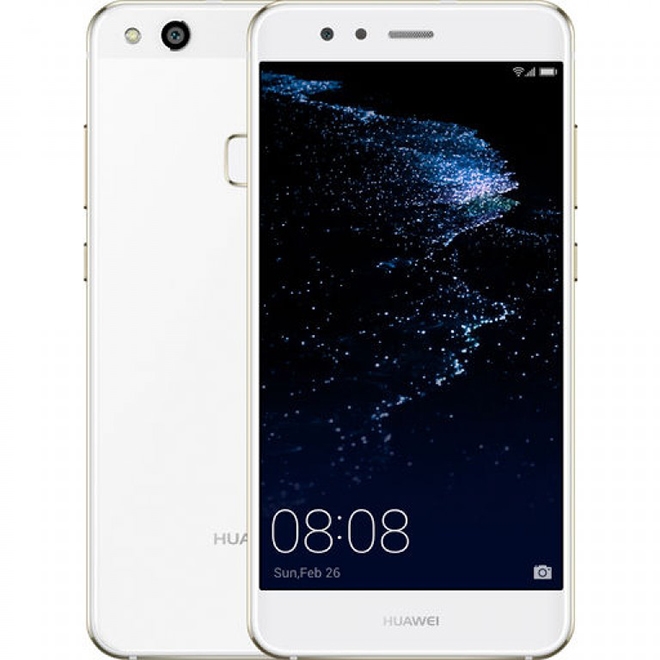
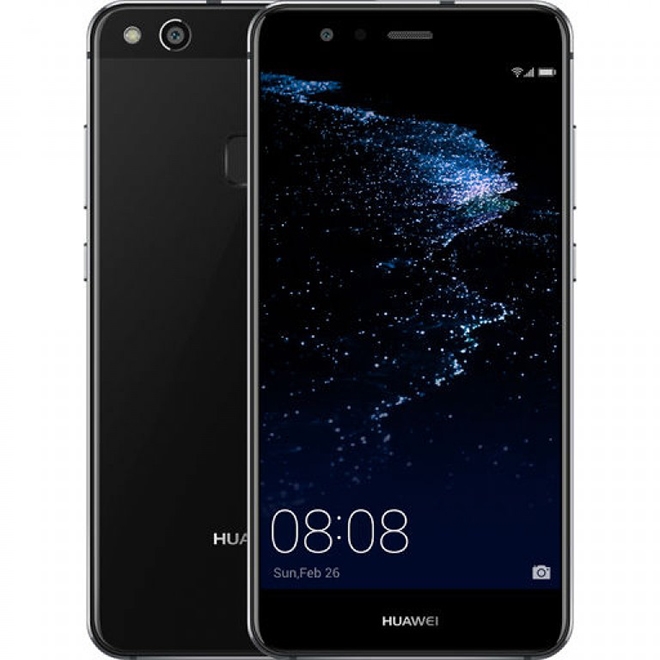

Most of the front panel of Huawei P10 Lite is occupied by a 5.2-inch IPS display with Full HD resolution. For comparison, the flagship device has a screen size of 5.1 inches. As already mentioned, the display is protected by rounded glass, which should provide a pleasant tactile sensation and more comfortable operation. The bezel around the screen is only 1.21 mm. Moreover, the press release lists the presence of an upgraded eye protection mode, although it is not known exactly how it will differ from the existing one in Huawei P10 and other models with EMUI 5 and higher. For the first time for a lightweight model, the Knuckle Sense function was introduced, which expands the touch control of a smartphone using a finger knuckle.
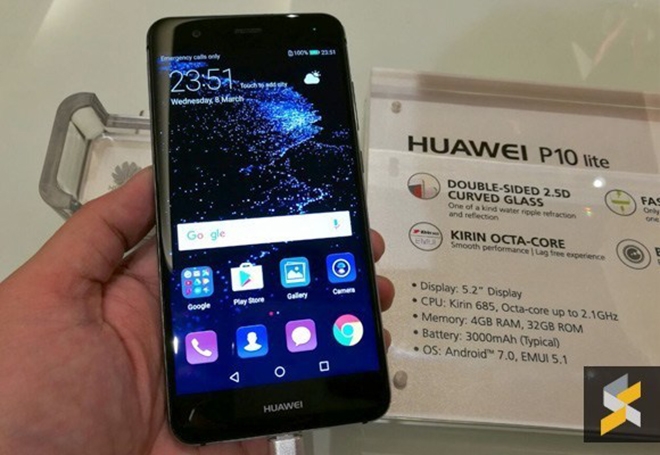
At the heart of the hardware component of Huawei P10 Lite lay a new 8-core HiSilicon Kirin 685 processor made using a 16 nm process technology. This chip is an overclocked version of the Kirin 655. 4 GB of RAM is attached to help, which, paired with a processor, will be enough to play streaming media content, games and other tasks. Data storage is handled by a 32 GB flash drive with the ability to expand with cards microSD format, and the device is powered by a non-removable 3,000 mAh battery with support for 9V/2A fast charging and Smart Power-Saving 5.0 energy-saving technology. Within 30 minutes of recharging, 43% of the battery charge is replenished. A full charge is achieved in just over 90 minutes.

The main camera module of the Huawei P10 Lite has a single 12MP sensor with f/2.2 aperture and 1.25µm pixel size, which allows it to capture more light and details. The selfie camera has a resolution of 8 megapixels and support for many modes, including portrait shooting and bokeh effect. Of course, there is no question of any sensors from Leica.

As is the case with older models, the light version of the flagship is running operating system Android 7.0 Nougat with a fresh Emotion UI 5.1 skin installed on top, which better manages system resources for optimal performance at the right time of use. For the optimal distribution of resources, a special self-learning algorithm was developed for the needs of the user.

The Huawei P10 Lite is now available for pre-orders in the UK for £299 and will go on sale on March 31st. In Malaysia, the novelty will cost 1,299 ringgits (16,981 rubles).
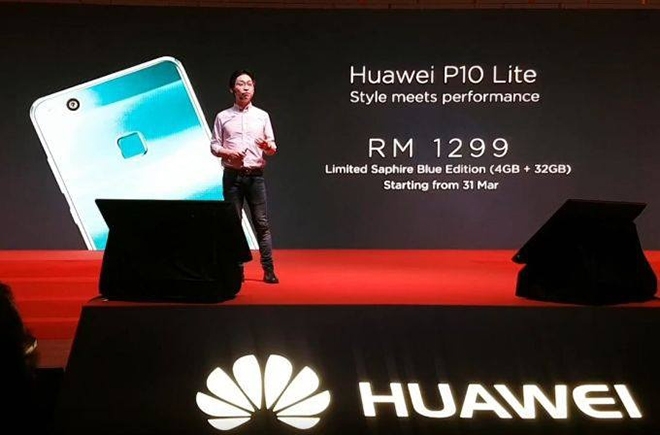
Technical Huawei specifications P10 Lite:
- Operating system: Android 7.0 Nougat, EMUI 5.1
- Screen: 5.2 inches, Full HD
- Processor: 8-core, HiSilicon Kirin 685, frequency 2.1 GHz
- Graphics chip: Mali-T830
- RAM: 4 GB
- ROM: 32 GB, MicroSD
- Camera: 12 MP, f/2.2 aperture, LED flash
- Front camera: 8 MP
- Connectors: MicroUSB, mini-jack 3.5 mm
- Extras: fingerprint scanner
- Battery: non-removable, 3000 mAh
The Chinese company Huawei this year in the middle segment is betting on the Huawei P10 Lite model. Instead of showing off double cam Leica and powerful flagship-level hardware, Huawei uses a mid-range processor and a single 12MP rear camera to bring the price down to $350.
This is not the only change made, so it is necessary to take a closer look at this device to understand whether it is worth spending money on it.
Contents of delivery:
- Smartphone Huawei P10 Lite;
- Charger 2 A;
- microUSB cable;
- in-ear headphones;
- SIM eject tool.
Huawei P10 Lite design

Huawei P10 Lite is attractive smartphone, which adheres to the traditional philosophy of this manufacturer. Despite this, in the line of devices, it looks somewhat alien, rather reminiscent of last year.
It is an elegant smartphone with rounded corners, glass and a metal frame, in this it is similar to the Huawei P10 devices. The difference lies in the fact that Huawei P10 and have an all-metal body, while the back surface of Huawei P10 Lite is made of glass. This doesn't mean it looks cheaper or isn't as comfortable to hold, but you do need to pay attention to where you'll leave the phone, as it can slip and break when tilted. For this reason, after the purchase, it is advisable to immediately purchase a case.
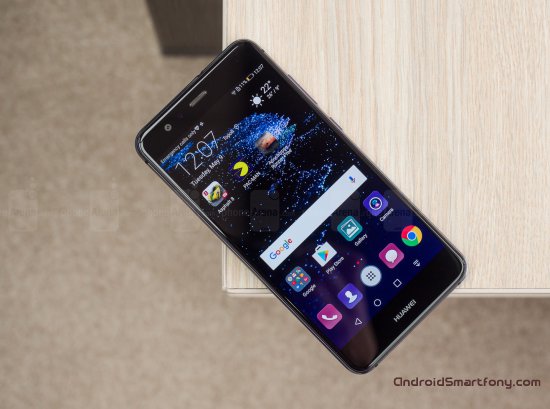
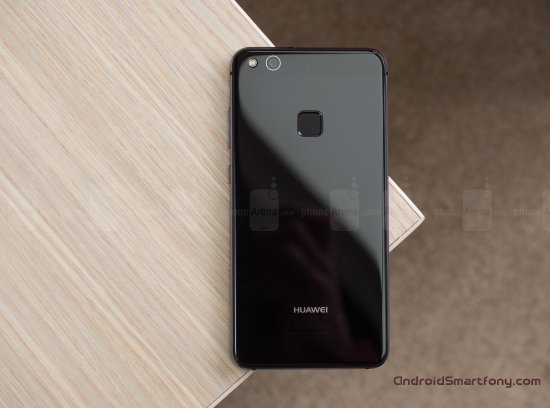
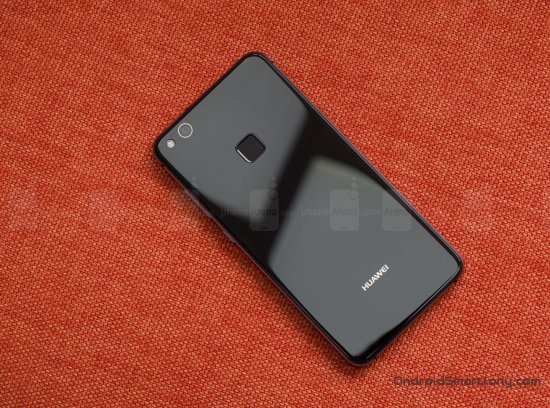
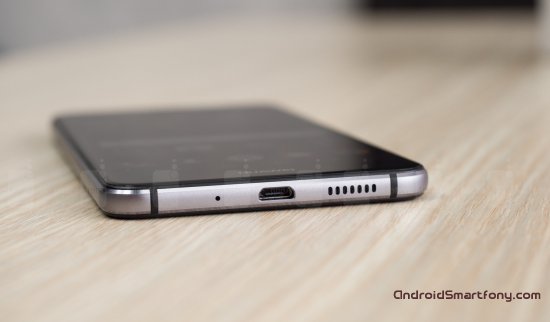

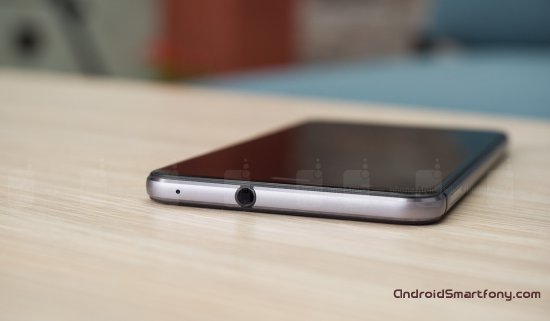

Another notable difference is the lack of dual rear cameras and physical home buttons, the location of the fingerprint scanner and the use of an outdated microUSB connector for recharging. The fingerprint scanner is located on the back of the case at a considerable distance from the camera. Unlike some of the more expensive Android smartphones, you don't run the risk of accidentally smearing the camera when you're trying to find the scanner. The scanner works reliably and quickly.
On the right side are the embossed power buttons and volume control, the dual SIM card slot is on the left. At the bottom is a microUSB connector and a speaker, a 3.5 mm headphone jack on top.
Compared to Huawei P10, this smartphone is longer, wider and thicker. Part of the reason is that it has a larger screen.
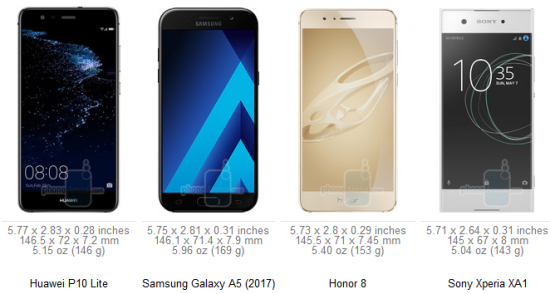
Screen
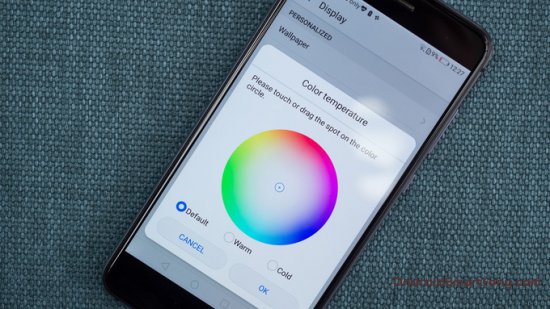
The Huawei P10 Lite features a 5.2-inch Full HD LCD screen with a pixel density of 424 ppi and a maximum and minimum brightness of 539 nits and 4 nits, respectively, for comfortable reading in both bright and dark environments.
This is where the good news ends. The color temperature of the screen is cold at 9400 K, so most colors have a blue tint. You can change the balance by opening Settings > Display > Color temperature. Color saturation was also noticed, although many will not see this as a problem.
Interface and functionality

Like all recent Huawei smartphones, this device runs on an operating Android system 7.0 with EMUI 5.1 user interface. As a result, the system is absolutely identical to that used in Huawei P10, the only difference is the lack of a physical Home button, which is used for multifunctional navigation.
If you've used EMUI before version 5.0 and didn't like it, now you should give it a second chance. Although it continues to look like a copy of the system Apple iOS, the Chinese manufacturer has included some features here that will appeal to fans of the pure version of Android.
By default, there is no list of applications, but you can easily enable it in the settings. If you don't like the layout of the on-screen navigation buttons, there are four different combinations available.
Experienced users will be attracted by the fact that there are many features and customization options. At the same time, such a variety can scare off not so sophisticated smartphone owners or older users who will not be able to figure it all out. In this case, there is a simple mode of operation, which is located in the advanced system settings.
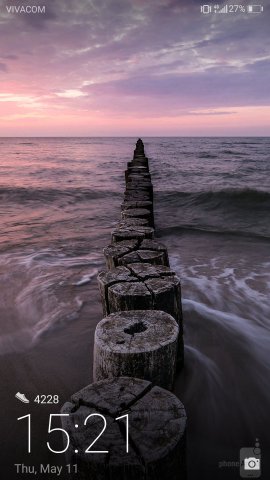
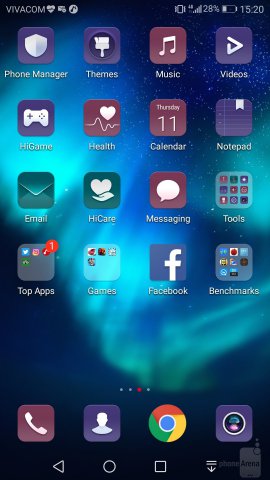
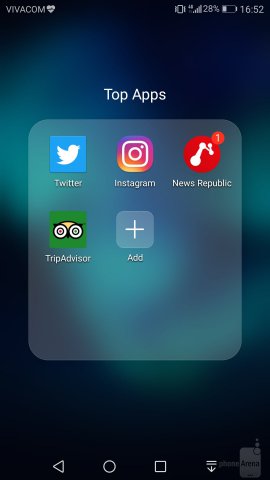

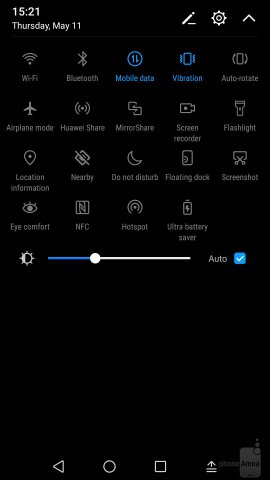
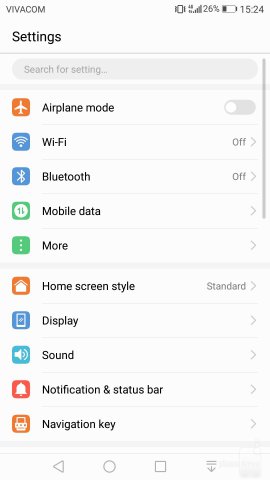
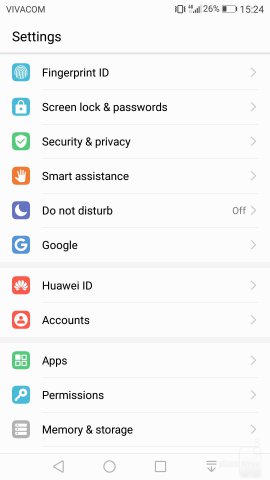
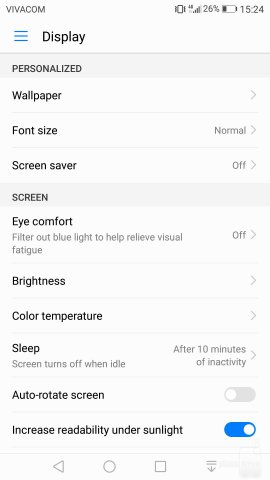
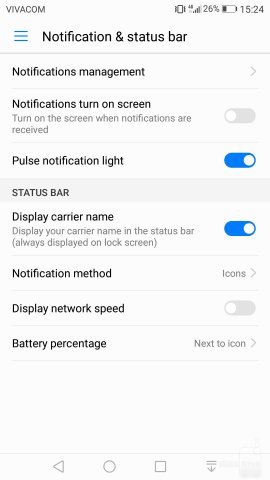
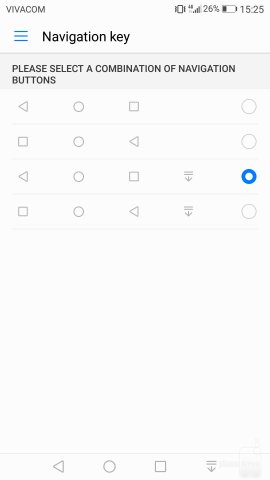

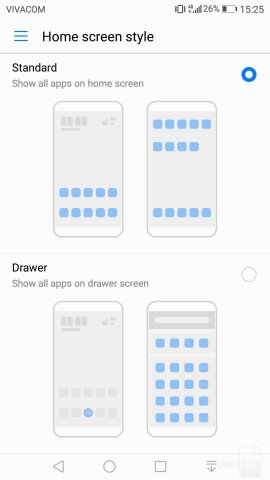
All this functionality means that EMUI is heavily modified Android version, although this does not prevent you from quickly moving between different screens and sections of the interface. Possible cause is to use in a machine learning interface that reallocates system resources to where they are most needed. On flagship smartphones this optimization is not so noticeable, because there is already high performance.
Processor and Memory
The Huawei P10 Lite is half the price of the Huawei P10, so the performance is half that. It uses a Huawei Kirin 658 processor with eight Cortex-A53 cores, four of which operate at a frequency of 2.36 GHz, others at a frequency of 1.7 GHz.In Western Europe, Asia-Pacific and North Africa, a version of the smartphone with 4 GB of RAM is sold. In this review, the variant with 3 GB of memory was considered, which also worked quite quickly.
Of course, the results in the AnTuTu and Geekbench benchmarks are not up to the flagship ones, but the vast majority of everyday tasks are performed without any problems. Navigation through the interface is fast and fluid, most heavy 3D games also go pretty fast. You will not get 60 frames / s, but this does not mean that it will not be comfortable to play.
The amount of flash memory in all countries is 32 GB, support for microSD memory cards is available to increase this value.

Internet and communication
Most standard 3G and LTE frequency bands are supported. Bluetooth 4.1, NFC, GPS and Wi-Fi communication standards are also available.Huawei P10 Lite cameras
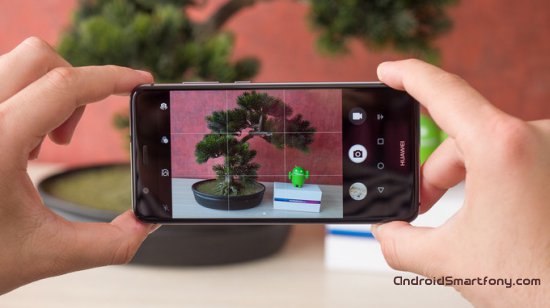
Huawei P10 Lite is a simplified version of the flagship P10. The first mention of a smartphone dates back to January 2017. The device belongs to the affordable class, offering the user excellent technical stuffing at a reasonable price.
Appearance and ergonomics
If we consider the design of Huawei P10 Lite, then the device is more reminiscent of the recent Honor 8 than it looks like its predecessor. The Chinese manufacturer decided to equip the novelty with a main camera with one module. On both sides, the smartphone has protective glass. At the same time, the corners of the case are neatly rounded to make using the phone as comfortable as possible. There is also a square fingerprint scanner on the back, and all the buttons on the front are virtual.
A 2900 mAh battery is hidden under the non-separable design. Dimensions P10 Lite: thickness - 7.2 mm, width - 72 mm, height - 146.5 mm, weight - 146 g.
Display
The model is equipped with a 5.2-inch screen with IPS matrix. The resolution of such a display is 1920 by 1080 pixels, that is, Full HD. The picture stands out with natural colors without acid tints. Moreover, the user can independently adjust some values.
Hardware and performance
Inside the P10 Lite is an octa-core Kirin 655 processor that can run at a maximum frequency of 2100 MHz. It is worth highlighting the presence of 64 GB right away internal memory, expandable with MicroSD cards(up to 256 GB). Did not deprive the smartphone and RAM in the amount of 4 GB. Therefore, the device works almost always very quickly and without lags. The only problem may arise only with the optimization of a particular application.
It is very important that the Huawei P10 Lite operates under Android control 7.0 - most new version operating system from Google. There is also a beautiful proprietary shell EMUI 5.0, which has received many interesting innovations.
Communication and sound
Huawei P10 Lite has two high-quality speakers (conversational and multimedia). They give good sound. In headphones, the situation is similar, and the built-in equalizer allows you to customize the sound for yourself. There is support for LTE networks.
Camera
This gadget is equipped with a 12-megapixel main camera with an abundance of settings and a flash. Autofocus is really fast here, and daytime photos are amazing. In the evening and at night the situation changes dramatically, which is quite expected for phones of this class. Available in P10 Lite and 8-megapixel front-camera, which pleasantly surprised with high-quality self-portraits.
conclusions
Smartphone P10 Lite will surely appeal to budget-conscious users. This apparatus has acquired a powerful iron, attractive appearance and quite reasonable price. And fresh software even more replenishes the treasury of all kinds of advantages.
Pros:
- Effective design.
- Android 7.0 and EMUI 5.0 shell.
- Productive filling.
- Two good cameras.
- Decent display.
Minuses:
- Sometimes the smartphone slips out of the hands.
Specifications Huawei P10 Lite
| General characteristics | |
|---|---|
| Model | Huawei P10 Lite |
| Date of announcement/start of sales | |
| Dimensions | 146.5 × 72 × 7.2 mm. |
| Weight | 146 |
| Body colors | White and others |
| Number and type of SIM cards | Single SIM (Nano-SIM) or Dual SIM(Nano-SIM, dual stand-by) |
| operating system | Android OS, v7.0 (Nougat) + Emotion UI 5.0 |
| Communication standard in 2G networks | GSM 850 / 900 / 1800 / 1900 - SIM 1 & SIM 2 (dual-SIM model only) |
| Communication standard in 3G networks | HSDPA 850 / 900 / 1700(AWS) / 1900 / 2100 HSDPA 800 / 850 / 900 / 1700(AWS) / 1800 / 1900 / 2100 |
| Communication standard in 4G networks | LTE band 1(2100), 3(1800), 4(1700/2100), 7(2600), 20(800), 38(2600), 39(1900), 40(2300), B41 LTE band 1(2100), 2(1900), 3(1800), 4(1700/2100), 5(850), 6(900), 7(2600), 8(900), 12(700), 17 (700), 18(800), 19(800), 20(800), 26(850), 38(2600), 39(1900), 40(2300), B41 LTE band 1(2100), 2(1900), 3(1800), 4(1700/2100), 5(850), 6(900), 7(2600), 8(900), 12(700), 17 (700), 18(800), 19(800), 20(800), 26(850), 28(700), 38(2600), 39(1900), 40(2300) |
| Display | |
| Screen type | IPS-NEO LCD capacitive touchscreen, 16 million colors |
| Screen size | 5.2 inches |
| Screen resolution | 1920x1080 |
| Multitouch | There is |
| Screen protection | Corning Gorilla Glass |
| Sound | |
| 3.5mm jack | There is |
| FM radio | No |
| Additionally | 24-bit/192kHz audio |
| Data transfer | |
| USB | Type-C 1.0 reversible connector |
| satellite navigation | GPS (A-GPS), GLONASS/BDS |
| WLAN | Wi-Fi 802.11 a/b/g/n/ac, dual-band, DLNA, WiFi Direct, hotspot |
| Bluetooth | v5.0, A2DP, LE |
| Internet connection | LTE, HSPA, EDGE, GPRS |
| NFC | |
| Hardware | |
| CPU | HiSilicon Kirin 655 |
| GPU | Mali-G71 MP8 |
| RAM | 4 GB RAM |
| Inner memory | 64 GB |
| Supported memory cards | microSD up to 256GB |
| Camera | |
| Camera | 12 MP, f/1.7, Leica optics, phase detection autofocus, LED flash |
| Camera features | Geo-tagging, touch focus, face detection, HDR, panorama |
| Video recording | 2160p@30fps |
| Front-camera | 8MP |
| Battery | |
| Battery type and capacity | 2900 mAh, non-removable |
| Additionally | |
| Sensors | Light, proximity, fingerprint, accelerometer, gyroscope, compass |
| Browser | HTML5 |
| IMAP, POP3, SMTP | |
| Other | -Fast battery charging -Google Search, Maps, Gmail, Talk -XviD/MP4/H.265 player -MP3/eAAC+/WAV/Flac player -Document viewer -Photo/video editor -Organizer -Voice dialing, voice commands, voice recording |
| Equipment | |
| Standard equipment | P10 Lite: 1 USB cable: 1 SIM eject tool: 1 User manual: 1 Warranty card: 1 Charger 5V/2A: 1 |
| Prices |
According to the already established tradition, along with the new flagship, Huawei introduced its “lightweight” version – P10 Lite. Outwardly, it is similar to, but several important differences have appeared in terms of characteristics and materials of execution. According to the manufacturer, it is they who allow us to call this model the younger version. the latest flagship, and not just another average. Is a smartphone worthy of such a title? Now we'll figure it out.
First impression
At first glance, the Huawei P10 Lite looks like a very familiar smartphone. The manufacturer has not experimented with design for a long time, so many new items are very similar to their predecessors, in this case we are talking about P9 Lite. By and large, the novelty differs from it only in a slightly more rounded body shape and a glass back panel (instead of plastic).
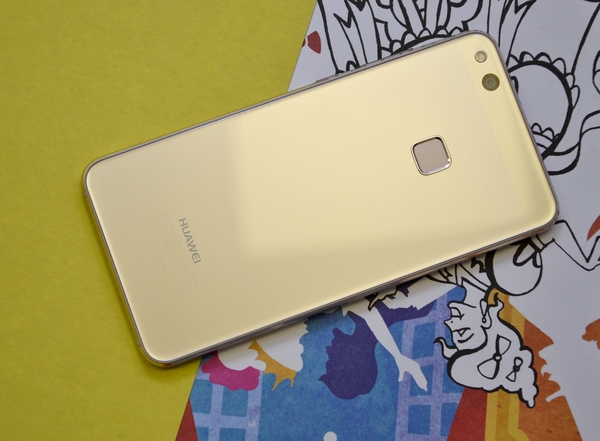
If you look closely, the P10 Lite has a few more differences - the round bezel of the main camera and the flash, this time single, and one grid on the bottom instead of the usual two, located on both sides of the USB port. The connector, by the way, is not Type‑C, although it would be time.
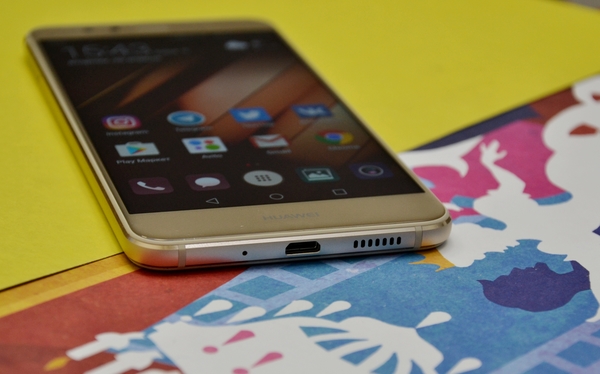
These very discreet design changes benefited the smartphone. It looks more neat and elegant. Due to the greater roundness and pronounced 2.5D glass effect on both sides, the design in the golden version turned out to be like “caramel”. Especially original Huawei P10 Lite looks in sapphire blue with a shiny film under the back glass, which effectively shimmers depending on the lighting.
The use of glasses on both sides of the case is stylish and modern, but not as practical and aesthetically pleasing as in the case of metal or the same plastic, because two glasses = twice as many fingerprints. The oleophobic coating does not save you from streaks and greasy marks, this is especially noticeable from the front. You will have to wipe this "lollipop" often.
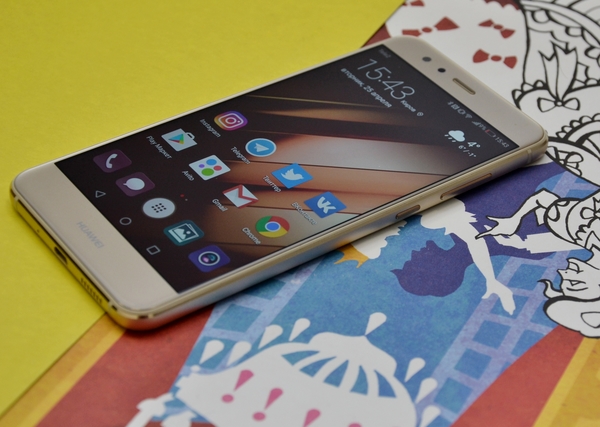
What kind of glasses Huawei used is not specified, but it is known that they have 7th level of hardness on the Mohs scale. This means that neither coins, nor keys, nor even a knife will be able to scratch them. In accordance with the same scale, ordinary glass has a 6th hardness level, while iron has a 5th hardness level. It turns out that you can damage the glass of Huawei P10 Lite only with some kind of file or sand – they also have the 7th level of hardness. Even harder topazes and diamonds are not taken into account.

The weakest point in the design of the P10 Lite is the barely visible plastic dividers that act as a link between the glass and the metal frame. They are just easy to scratch with this you need to be careful. Otherwise, the gadget is very reliable, you won’t have to take care of it like the apple of your eye and blow off dust particles once again.
Screen
The smartphone is equipped with a 5.2-inch screen with a resolution of 1920x1080 pixels. Matrix - LTPS, but there are no faded flowers traditional for her. The picture, calibrated by default, pleases with color reproduction and viewing angles. In the settings, you can fine-tune the accent according to your preferences, making it warmer or colder.

In addition, there is an option to increase the clarity of the image in the sun and an eye protection mode, the activation of which can be configured according to the schedule. For those who like to read books on their smartphone at night, this will be useful.
Performance
The octa-core HiSilicon Kirin 658 processor installed in the P10 Lite is a good mid-range solution that ensures smooth operation of the interface even with a dozen background tasks. In modern shooters and 3D action games, you can always count on a comfortable game without dropping frame rates, but not always with maximum graphics.


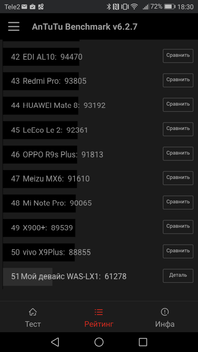
In benchmarks, the results are expectedly good, especially in GeekBench: 905 points in a single-core test and 3,307 in a multi-core test. The same one with Snapdragon 625 scores less: 826 and 2,924, respectively. In AnTuTu, the result of the P10 Lite can be called average among the "classmates" - 61,278 points. nova has over 64,000 points, and , which is also its direct competitor, has over 74,000 points.

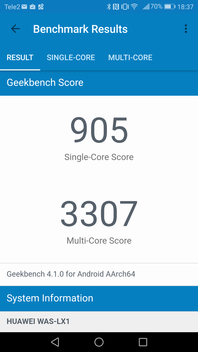

The amount of RAM was 3 GB, which is the norm for the middle class, while the built-in memory is 32 GB. Expandable with microSD cards up to 128 GB instead of a second SIM card).
System
The smartphone runs on Android 7.0 Nougat with the EMUI 5.1 shell installed on top. With each update, the proprietary interface becomes neater and cleaner, which is good news, but in general, there are very few changes in terms of customization and freedom of choice. If you prefer the bare Android design or just like to change themes often, EMUI won't make you happy.
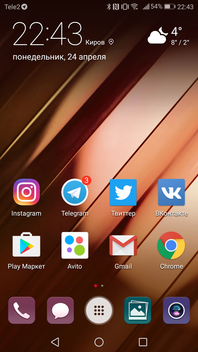
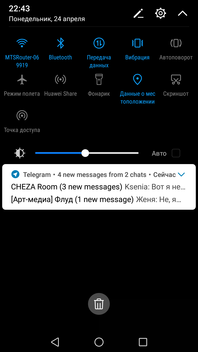

There is a theme store on the smartphone, but you are unlikely to be able to choose something modern and attractive in it. Everything that is high quality and pretty - everything is in the style of standard themes available by default. You will not find anything even by the word “Material” in the search for topics, the developers seem to deliberately adhere only to the course chosen by the company in design.

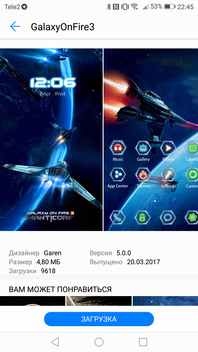
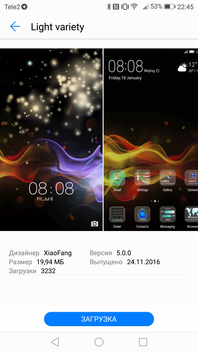
There are no complaints about the speed of work and the smoothness of the interface itself. Almost all standard applications start very quickly and quickly open from the background.
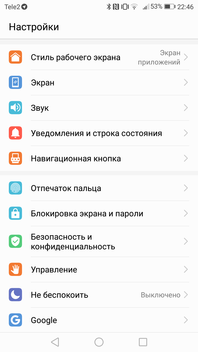

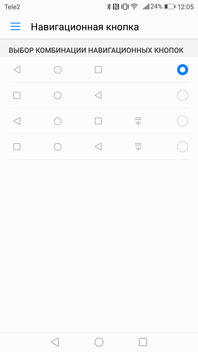
Concerning functionality, then there is nothing to complain about here either. EMUI 5.1 really has a lot of useful features: there is an icon setting quick start in the curtain, the so-called long screenshot, the ability to change the scale of the desktop, the choice of combinations of navigation buttons, a pedometer on the lock screen and the option to launch one application with different accounts (clone application). The latter, for example, allows you to activate two Accounts on facebook or whatsapp.

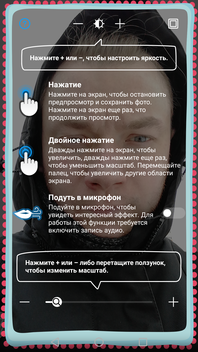

Separately, I note the appearance of the screen installed applications, which will please those who do not like it when everything installed games and programs pile up on desktops. Now they are all in one searchable ordered place.
cameras
The main 12-megapixel camera with f/2.2 aperture, 1.25 micron pixels and autofocus allows you to get good macro shots, as well as excellent outdoor photos in sufficient light. In such conditions, the camera is able to surprise with attention to small details and accurate color reproduction without embellishment.








In a room, especially with subdued light, you will be surprised not by the detail, but by the abundance of noise. It even seemed strange, since a camera with such a sensor, even theoretically, should shoot much better under such conditions. Frames are often spoiled by ordinary room lighting..





There is a small problem with light sources at night. If you want to capture some evening lights, you will need to avoid close contact with the same street lights. This will allow you to get high quality photo static objects.


regular selfie on the left, portrait mode with bokeh on the right
The 8-megapixel selfie camera on the P10 Lite is not bad. In simple conditions, it shoots with high quality, but by default, for some reason, it always turns on portrait mode, which tries to “soap” the background. The quality of this bokeh depends on the uniformity of the background and its contrast with the main shot, i.e. your face/hair. You can squeeze something interesting out of it, but if you need a clearer photo, you should use the normal mode. You can smear the background after using other means.
Fingerprint scanner
Rear fingerprint sensor truly flagship. With its help, the screen is unlocked just instantly, I have seen such speed only in top-end smartphones before. Recognition accuracy is almost perfect.

In addition, there are a lot useful options, allowing you to take a photo with a scanner when running application to take pictures, answer calls, turn off the alarm, open the notification shade, and scroll through the images in the gallery. All this works very quickly and accurately - no nerves.
autonomy
The 3,000 mAh battery gives you a day of smartphone use without the fear of running out of battery when you're away from a power outlet. My mode of use has always had a stable 4 hours of active screen. For mid-range devices, this can still be called the norm, especially for the owner of an FHD display.
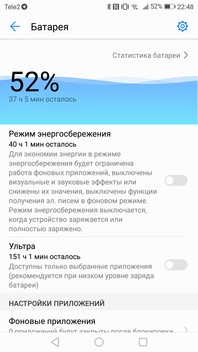
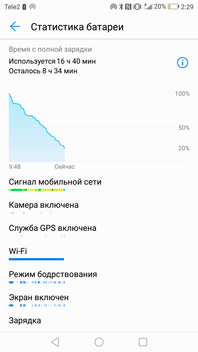
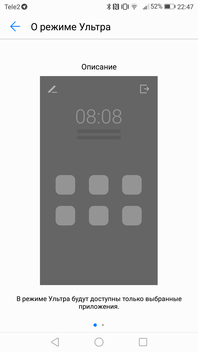
Usually, for emergency situations, when the remaining charge needs to be stretched for a maximum of time, manufacturers provide “only calls and SMS” modes. Huawei, on the other hand, went further, giving users the opportunity to choose some important applications for it. This mode is called Ultra” and it is very convenient and useful away from outlets. When activated, even the background image and functions like a screenshot are turned off, leaving only access to calls, messages, contacts, and three more applications that you choose.
Also a nice feature of Huawei P10 Lite was the proprietary accelerated charging. SuperCharge, which allows you to replenish 40% of the battery in about half an hour. This is official data, which is fully consistent with the truth. A full charge takes about 1 hour and 40 minutes, which is not so fast, but still not bad.
Summary
Huawei P10 Lite really has significant advantages that allow it to be perceived as something more than an ordinary average. These are just the features that he inherited from the "big brother", the flagship P10. We are talking about a very fast fingerprint scanner, fast charging, a reliable glass case and generally good cameras. Although the main photomodule is something contradictory, capable of both pleasing and disappointing. Perhaps the existing problems in the shooting algorithms will be fixed with one of the updates. This will allow P10 Lite to be called almost the best camera phone under 20,000 rubles.
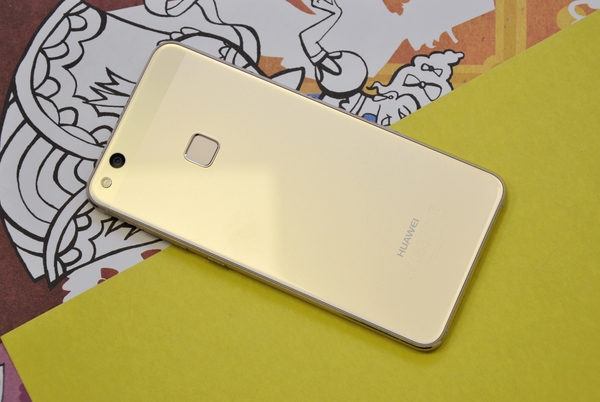
Huawei P10 Lite costs 19,000 rubles, and at this price, its main competitor, oddly enough, is Honor 8 lite, which looks very similar to it. It's a little cheaper, but lacks a few important features. We devoted a separate comparison of these smartphones. Among other competitors: and a slightly more expensive Meizu Pro 6.
Advantages:
- reliable glass case;
- high-quality screen;
- good cameras;
- fast fingerprint scanner;
- fast charging.
Flaws:
- soiled glass;
- strong dependence of the main camera on light;
- poor choice of EMUI themes.
Features of Huawei P10 Lite:
- OS: Android 7.0 Nougat + EMUI 5.1;
- screen: 5.2-inch LTPS with a resolution of 1920x1080 pixels and 2.5D glass;
- Processor: Octa-core HiSilicon Kirin 658 @ 2.1 GHz with Mali‑T830MP2 graphics accelerator;
- RAM: 3 GB;
- memory: 32 GB + microSD up to 128 GB;
- Primary Camera: 12MP f/2.2, 1.25µm pixels, autofocus, LED flash and 1080p@60fps video recording;
- front camera: 8 megapixels with aperture f / 2.0;
- interfaces: Wi‑Fi 802.11 a/b/g/n/ac, Bluetooth 4.1, FM radio, A‑GPS, GLONASS, NFC;
- battery: 3,000 mAh + fast charging super charge;
- USB: microUSB;
- dimensions: 146.5 × 72 × 7.2 mm;
- weight: 146 grams.
